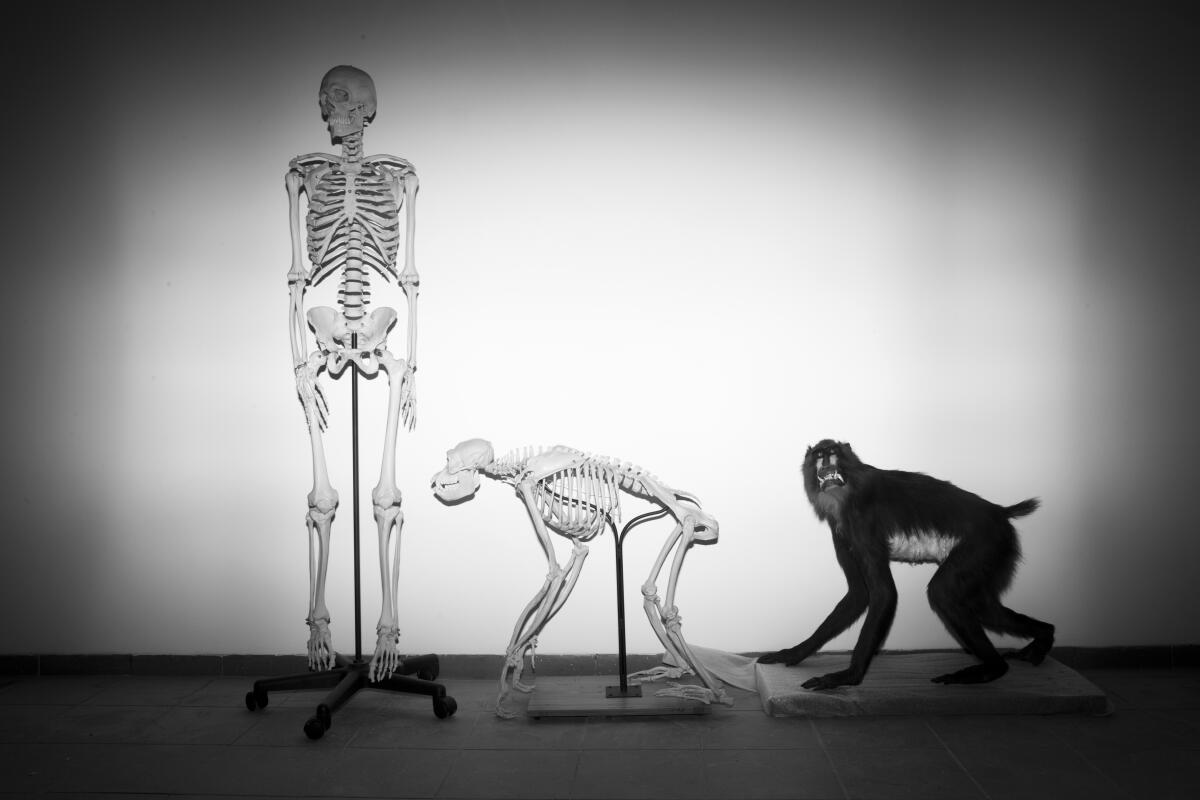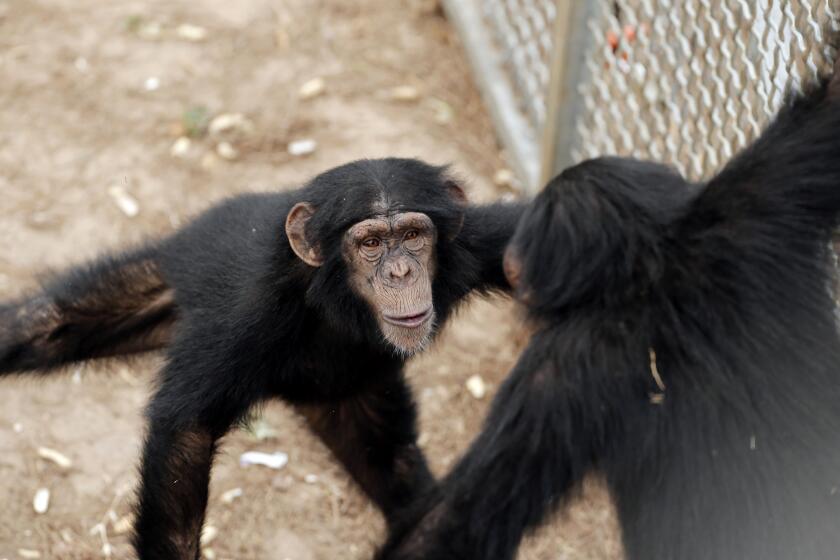Our ancient animal ancestors had tails. Why don’t we?

WASHINGTON — Our very ancient animal ancestors had tails. Why don’t we?
Somewhere around 20 million or 25 million years ago, when apes diverged from monkeys, our branch of the tree of life shed tails. From the time of Charles Darwin, scientists have wondered why — and how — this happened.
Now, researchers have identified at least one of the key genetic tweaks that led to this change.
“We found a single mutation in a very important gene,” said Bo Xia, a geneticist at the Broad Institute and co-author of a study published Wednesday in the journal Nature.
To pinpoint key differences between the groups, the researchers compared the genomes of six species of apes — including humans — and 15 species of monkeys with tails.
Leave it to a guy in a King Kong suit to demonstrate that humans’ thinking abilities aren’t quite as special as we’d like to think.
Once they identified a significant mutation, they tested their theory by using the gene-editing tool CRISPR to tweak the same spot in mouse embryos. Those mice were born without tails.
Xia cautioned that other genetic changes may also play a role in losing tails.
Another mystery: Did having no tails actually help these ape ancestors — and eventually, humans — survive? Or was it just a chance mutation in a population that thrived for other reasons?
“It could be random chance, but it could have brought a big evolutionary advantage,” said Miriam Konkel, an evolutionary geneticist at Clemson University, who was not involved in the study.
As to why having no tails may have helped, there are many tantalizing theories — including some that link being tailless to humans eventually learning to walk upright.
Our closest animal relatives are capable of remembering former groupmates they haven’t seen in years, or even decades, researchers report.
Rick Potts, who directs the Smithsonian Institution’s Human Origins Project and was not involved in the research, suggests being tailless may have been a first step toward some apes adopting a vertical body posture, even before they left the trees.
Not all apes live on the ground today. Orangutans and gibbons are tailless apes that still live in trees. But Potts notes that they move very differently than monkeys, who scamper along the tops of branches, using their tails for balance. Tree-dwelling apes hang below branches, swinging between them while hanging largely upright.
New York University biologist Itai Yanai, a co-author of the study, said that losing our tails was clearly a major transition. But he added that the only way to know the reason with certainty “would be to invent a time machine.”






